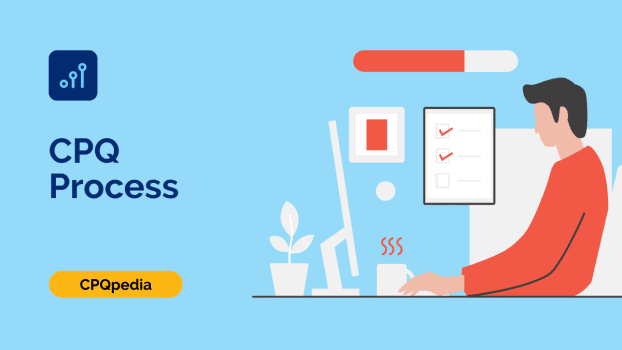What is the CPQ Process?
Some few years back, the practice was the manual computation of sales quotations and products’ prices; apart from being slow, it was fraught with mistakes and human errors.
Today, we no longer need to configure, calculate prices, and manually compute quotations. As of 2019, the forecast was that Sales and Marketing teams that collaborate using Configure-Price-Quote (CPQ) and Marketing Automation AI-based applications would see an increase of 155% across sales teams in 2021.
Also, Gartner, an IT research and advisory firm, estimated that the CPQ market rose to $1.4 billion in 2019, up 16% from 2018. The estimations from Forbes and Gartner are indications that CPQ is not hype.
What is the CPQ Process?
CPQ simply means Configure, Price, Quote. To enhance the purchasing experience, you need an integrated process that will enable you to promptly and accurately generate sales quotes. CPQ process advances and streamlines the selling process by removing repetitive manual tasks.
The Three Steps of the CPQ Process
The three steps of the CPQ process: Configure, Price, and Quote, are not new to the business world; what has changed is that we now utilize AI-based technologies and in-depth integration of data to facilitate the process.
Configure
The configuration process involves selecting and combining different options necessary to create a customer-specified product. The two things that control the process are the rules of configuration and the limits related to the product.
Customizing a product or service according to customers’ specifications has always been a tedious task that does not even include the time element. The CPQ software renders the configuration process easy; it is now possible for sales to offer distinct variations of products and services that meet the specific needs of consumers.
Sales can now efficiently and perfectly understand what customers want and guide them on different variations of product features that are possible.
Price
The level of competition in the global market makes it difficult for businesses to sell products at their actual prices. It’s, however, possible for a handful to attempt to sell at their regular pricing schemes in all selling situations.
Due to the level of sophistication of consumers, businesses resort to offering special pricing for volume or bundle purchases and even give discounts to enable deals. Any attempt to calculate prices in such an instance can be a huge mistake because what sellers would use will be inconsistent and wrong discounts that will yield adverse results.
CPQ process now uses price optimization to compute prices, and salespeople can promptly generate accurate quotes with consistent pricing; the package they can readily offer on the spot also includes the correct discounting schemes. Set your organization’s pricing rules consisting of percent-of total subscriptions, volume discounts, prenegotiated contract pricing, and channel and partner pricing, governing the different pricing schemes.
The pricing models you can use in the CPQ process for real-time pricing include usage-based or recurrent pricing, percent-of-total subscriptions, volume discounts, prenegotiated contract pricing, and channel and partner pricing.
Quote
The quote stage is significant to salespersons because it indicates when they can close the deal. Errors such as typos and using poor data arise from manual quotes.
CPQ enables the creation of fast quotes you can sign electronically and send to the customer through email with just a few clicks. An email management platform may be necessary for optimizing the process.
The automation technology CPQ software uses derives the necessary data and calculates pricing with precise product configurations. The CPQ process removes errors from the quoting process; at the same time, it quickens and professionalizes quoting.
The CPQ process focuses on the organization’s branding rules in creating quotes, and you can promptly make changes to update quotes in real-time.
The Key Metrics for Managing the CPQ Process
You need a series of analytics, KPIs, and metrics to manage the CPQ process; the essence is to have insight into how every department in a sales cycle contributes to each stage of customer relationships. Therefore, let’s look at how the following five metrics contribute to greater sales effectiveness and improved customer experience.
- Average Quote Value (ACV) – ACV is the sum of active quotes’ value/number of quotations you generate. ACV is critical to measuring sales effectiveness because the insights gained will enhance upsell and cross-sell revenue. The best approach is to create a CPQ dashboard that can track ACV by product line and promotional items. Your CPQ dashboard must also track bundles, sales rep, region, channel, and customer type. The data you gather through this process will give you a comprehensive insight into sales efficiency.
- Customer Churn Rate/Attrition Rate – You need to know the number of customers you lose within a given time. Churn is the number lost in a given time/total number of customers. You can get the churn rate by dividing the total number of customers who canceled by multiplying the customer number by a given time. The Churn Rate gives an insight into the possibility of a customer canceling within a specific period. The churn rate in CPQ can apply to premium support, maintenance, and warranty agreements.
- Percent of Opportunities Quoted (POQ) – This is the number of quoted opportunities/number of all opportunities. The POQ indicates when you have problems with deals in the pipeline and how the risks will impact sales. It serves as an indicator of which sales representatives or products need more sales enablement training. A poor POQ means that you are not deploying CPQ tools appropriately.
- Quote Cycle Time (QCT) – You need to know how long it takes to create an accurate quote and when you can deliver the product you have configured. The faster you produce an accurate quote, the better your chances of closing a deal. The quote cycle time is a metric that measures the time you need to create a quote accurately; it’s an invaluable asset for any organization that runs a builds-to-order, configures-to-order, and engineers-to-order strategy needs in this highly competitive business world.
- Discount Performance Trend – If you are using the CPQ solution for selling, the Discount Performance Trend is an invaluable metric. It provides insight into how the pricing discounts you offer are impacting sales. The Discount Performance Trend is the dividend you get when you divide the difference between the List Price and Net Price by the List Price. This metric quickly shows the discounts you should continue applying.
Tips for Optimizing the CPQ Process
Creating an effective and efficient CPQ process is a vital part of successful sales operations. By optimizing the process, the time it takes to generate accurate quotes with accurate prices can be significantly reduced. Here are some tips on how to optimize your CPQ process:
1. Streamline data entry by automating data entry tasks via CRM integration. Automation eliminates manual errors and reduces manual labor costs associated with data entry. Automation also allows for faster quoting and faster delivery times to customers.
2. Utilize product catalogs and price lists that are integrated into the CPQ system. This allows you to pre-populate fields in your CPQ system with key product details such as pricing, availability, discounts, etc., reducing time spent manually entering this information into the system for each customer quote request.
3. Incorporate a rules engine into your CPQ process so that you can apply additional business logic automatically when generating quotes or customizing products for customers. This helps reduce the resources needed for quote generation while ensuring that each quote is accurate and customized according to customer needs and expectations.
4. Integrate analytics into your CPQ process so that you can track usage trends, access real-time performance metrics, and identify opportunities for improvement in the system’s performance over time based on customer usage data. This helps ensure your CPQ system remains optimized and up-to-date at all times.
5. Finally, organizations should consider investing in CPQ software solutions that are tailored to their specific needs. A good CPQ software should have features such as an intuitive user interface, rules-based configuration capabilities, comprehensive reporting options, built-in analytics capabilities, and current product catalogs with dynamic pricing structures so that teams can easily find necessary information quickly and accurately. Having access to comprehensive yet user-friendly software will enable businesses to streamline their quoting processes while improving accuracy in the quote-to-order process.
How do you know it’s Time for you to Use CPQ?
The following tips will guide you to know when your business needs to apply the CPQ process:
- When your products/services are configurable – If your business offers different levels of product customization, you need the CPQ process to drive price changes.
- You have bundles or packages – If you offer some items as an up-sell or cross-sell, or offer discounted pricing if customers purchase in bundles or packages.
- When you operate complex pricing – You need a CPQ process instead of spreadsheets to take care of complex pricing resulting from items you sell based on quantity, customer type, or calculations.
- Approval rules – Some organizations insist on quotes going through some levels of formal approval before sending to customers; this rule may apply to every single quotation from the organization or more complex ones.
- Discounting rules – You need the CPQ process where you have limits on discounts your sales team can give customers; you can base discounting rules on the experience of salespersons or minimum margin requirements.
- Multiple currencies or languages – The CPQ process allows you to localize your offer, especially where you have offices in different parts of the world, and send quotes in currencies, such as Euros, U.S. dollars, or Yen.
- Multiple price books, quote templates, and complex quotes – Problems can arise from the segmentation of prices and products, duplicate sections/quote tables, or quote templates for customers. The CPQ process ensures you don’t have wrong quotes, be limited in presenting your offers, or have problems applying the products and prices to the different segments.
- Guided selling – You may have products that require special knowledge to configure or quote; Some quoting software guides your salespersons into optimal configurations for the organization and customers.
FAQs
CPQ (Configure, Price, Quote) is often used to describe software that is used by sales to provide accurate quotes for complex and changeable solutions or products.
The CPQ process, particularly its CPQ implementation, is a system for producing fast, accurate quotes that are crucial to sales success. As a result, a lot of the inefficient and time-consuming manual work is eliminated.
CPQ software can be criticized for its strict processes, cost, or unfriendly user interface. These issues can often be the result of an incorrect CPQ implementation when carrying out the project.
CPQ is a sales tool to generate timely quotations. CPQ platforms and apps work in alignment with ERP programs and CRM tools amongst other business platforms to share and access data.
CPQ software is integrated into CRM to ensure that product pricing, changes, and quotation are all aligned and part of one sales method.

Andrew is a professional copywriter with expertise in creating content focused on business-to-business (B2B) software. He conducts research and produces articles that provide valuable insights and information to his readers.

